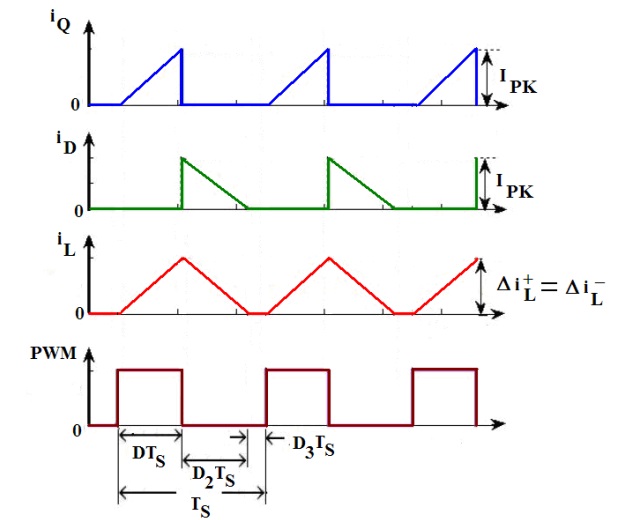Enhancing Buck-Boost Converter Efficiency and Dynamic Responses with Sliding Mode Control Technique
DOI:
https://doi.org/10.51173/jt.v6i2.2530Keywords:
Buck-Boost Converter, Power Electronics, Sliding Mode Control, OptimizingAbstract
DC-DC converters are an important class of power electronics due to their wide use in various applications as sources of efficient power supplies. They step down or step up the applied voltage so that it is always either lower or higher than the supplied voltage. This is crucial in power delivery and portable systems, especially in battery-operated systems. The purpose of the paper is to investigate how the efficiency of Buck-Boost converters improves by using sliding mode control when operating under different conditions. The work aims to develop a control strategy that increases the efficiency and reliability of Buck-Boost converters, employed in a myriad of power electronics applications. The research focuses on a sliding mode control approach to overcome the challenges of nonlinear dynamics and susceptibility to external disturbances. The methodology involves studying the behavior of the converter under different conditions such as changes in loads, input voltage variations, and reference voltage changes. The study uses theoretical modeling and simulation to evaluate the concept of sliding mode in addressing the challenges for improved efficiency. Such investigations show how sliding mode control improves efficiency. SMC approach reduces the response time by 5%, improves efficiency by 3%, and enhances overall stability under fluctuating conditions. The use of sliding mode control enhances the converters against disturbances and provides an efficient voltage regulator. The research is useful to the field as it offers more insights into the control strategy that significantly improves the performance of converters concerning efficiency and stabilization.
Downloads
References
J. Cao, Q. Chen, L. Zhang, and S. Quan, “Sliding mode control of bidirectional DC/DC converter”, 2018 33rd Youth Academic Annual Conference of Chinese Association of Automation (YAC), May 2018. doi: https://doi.org/10.1109/yac.2018.8406465.
B. A. Martinez‐Treviño, A. El Aroudi, E. Vidal‐Idiarte, A. Cid‐Pastor, and L. Martinez‐Salamero, “Sliding‐mode control of a boost converter under constant power loading conditions”, IET Power Electronics, vol. 12, no. 3, pp. 521–529, Jan. 2019. doi: https://doi.org/10.1049/iet-pel.2018.5098.
R. M. Brisilla and C. Rani, “Output Voltage Regulation of DC to DC Boost Converter Using Integral Sliding Mode Control”, 2019 Innovations in Power and Advanced Computing Technologies (i-PACT), Mar. 2019. doi: https://doi.org/10.1109/i-pact44901.2019.8960114.
E. Awada, E. Radwan, and M. Nour, “Robust Sliding Mode Controller for Buck DC Converter in off-grid Applications”, Bulletin of Electrical Engineering and Informatics, vol. 11, no. 5, pp. 2425–2433, Oct. 2022. doi: https://doi.org/10.11591/eei.v11i5.3705.
V. Hugo, L. Hsu, Tiago Roux Oliveira, and L. Fridman, “Adaptive Sliding Mode Control with Guaranteed Performance Based on Monitoring and Barrier Functions”, International Journal of Adaptive Control and Signal Processing, vol. 36, no. 6, pp. 1252–1271, May 2021. doi: https://doi.org/10.1002/acs.3278.
S. M. Amrr, J. Ahmad, S. A. Waheed, A. Sarwar, A. S. Saidi, and M. Nabi, “Finite-Time Adaptive Sliding Mode Control of a Power Converter Under Multiple Uncertainties”, Frontiers in Energy Research, vol. 10, May 2022. doi: https://doi.org/10.3389/fenrg.2022.901606.
Tania Demonte Gonzalez, “Sliding Mode Control of a Nonlinear Wave Energy Converter Model”, Digital Commons - Michigan Tech (Michigan Technological University), Oct. 2021. doi: https://doi.org/10.37099/mtu.dc.etdr/1287.
F. Mohammadhassani and H. G. Narm, “Dynamic Sliding Mode Control of Single‐stage Boost Inverter with Parametric Uncertainties and Delay”, IET Power Electronics, vol. 14, no. 12, pp. 2127–2138, Mar. 2021. doi: https://doi.org/10.1049/pel2.12096.
O. Abdel-Rahim, A. Chub, A. Blinov, and D. Vinnikov, “New High-Gain Non-Inverting Buck-Boost Converter”, IECON 2021 – 47th Annual Conference of the IEEE Industrial Electronics Society, Oct. 2021. doi: https://doi.org/10.1109/iecon48115.2021.9590003.
V. I. Utkin, “Sliding mode control”, Institution of Engineering and Technology eBooks, pp. 3–18, Jan. 2004. doi: https://doi.org/10.1049/pbce066e_ch1.
S. J. Gambhire, D. R. Kishore, P. S. Londhe, and S. N. Pawar, “Review of sliding mode based control techniques for control system applications”, International Journal of Dynamics and Control, May 2020. doi: https://doi.org/10.1007/s40435-020-00638-7.
A. Ferrara and G. P. Incremona, “Sliding Modes Control in Vehicle Longitudinal Dynamics Control”, Studies in systems, decision and control, pp. 357–383, Aug. 2017. doi: https://doi.org/10.1007/978-3-319-62896-7_15.
Z. Liu, H. Su, and S. Pan, “A New Adaptive Sliding Mode Control of Uncertain Nonlinear Systems”, Asian Journal of Control, vol. 16, no. 1, pp. 198–208, Dec. 2012. doi: https://doi.org/10.1002/asjc.657.
S. Ramalingam, S. Harika, A. Sowmya, N. Ramakrishnan, and S. Purushothaman, “Design and Implementation of Boost-Buck DC–DC Converter for Battery Charging Application”, Springer proceedings in energy, pp. 111–128, Jan. 2021. doi: https://doi.org/10.1007/978-981-16-0719-6_10.
I. Achmad and A. T. Nugraha, “Implementasi Buck-Boost Converter Pada Hybrid Turbin Angin Savonius Dan Panel Surya”, Journal of Computer, Electronic, and Telecommunication, vol. 3, no. 2, Dec. 2022. doi: https://doi.org/10.52435/complete.v3i2.192.
A. Yasin, M. Ashraf, and A. Bhatti, “Fixed Frequency Sliding Mode Control of Power Converters for Improved Dynamic Response in DC Micro-Grids”, Energies, vol. 11, no. 10, p. 2799, Oct. 2018. doi: https://doi.org/10.3390/en11102799.
K. Bendaoud, J. Laassiri, S. Krit, and L. Elmaimouni, “Design and Simulation DC-DC Power Converters Buck and Boost for Mobile Applications Using Matlab/Simulink”, 2016 International Conference on Engineering & MIS (ICEMIS). IEEE, pp. 1-6, Sep. 2016. doi: https://doi.org/10.1109/icemis.2016.7745361.
H. Komurcugil, “Sliding Mode Control Strategy with Maximized Existence Region For DC–DC Buck Converters”, International Transactions on Electrical Energy Systems, pp. 1-14, Dec. 2020. doi: https://doi.org/10.1002/2050-7038.12764.
B. Xu, L. Zhang, and W. Ji, “Improved Non-Singular Fast Terminal Sliding Mode Control with Disturbance Observer for PMSM Drives” , IEEE Transactions on Transportation Electrification, vol. 7, no. 4, pp. 2753–2762, Dec. 2021, doi: https://doi.org/10.1109/tte.2021.3083925.
G. Balta, N. Guler, and N. Altin, “Modified Fast Terminal Sliding Mode Control for DC-DC Buck Power Converter with Switching Frequency Regulation”, International Transactions on Electrical Energy Systems, vol. 2022, pp. 1–17, Oct. 2022. doi: https://doi.org/10.1155/2022/5076611.
V. Toro and E. Mojica-Nava, “Multilayer and multiplex DPI control for a set of boost converters”, IEEE 3rd Colombian Conference on Automatic Control (CCAC), Oct. 2017. doi: https://doi.org/10.1109/ccac.2017.8276397.

Downloads
Published
How to Cite
Issue
Section
License
Copyright (c) 2024 Salah Hilo Mohammed Al-Attwani, Mustafa Teke, Ethar Sulaiman Yaseen Yaseen, Enes Bektaş, Nurettin Gökşenli

This work is licensed under a Creative Commons Attribution 4.0 International License.
















